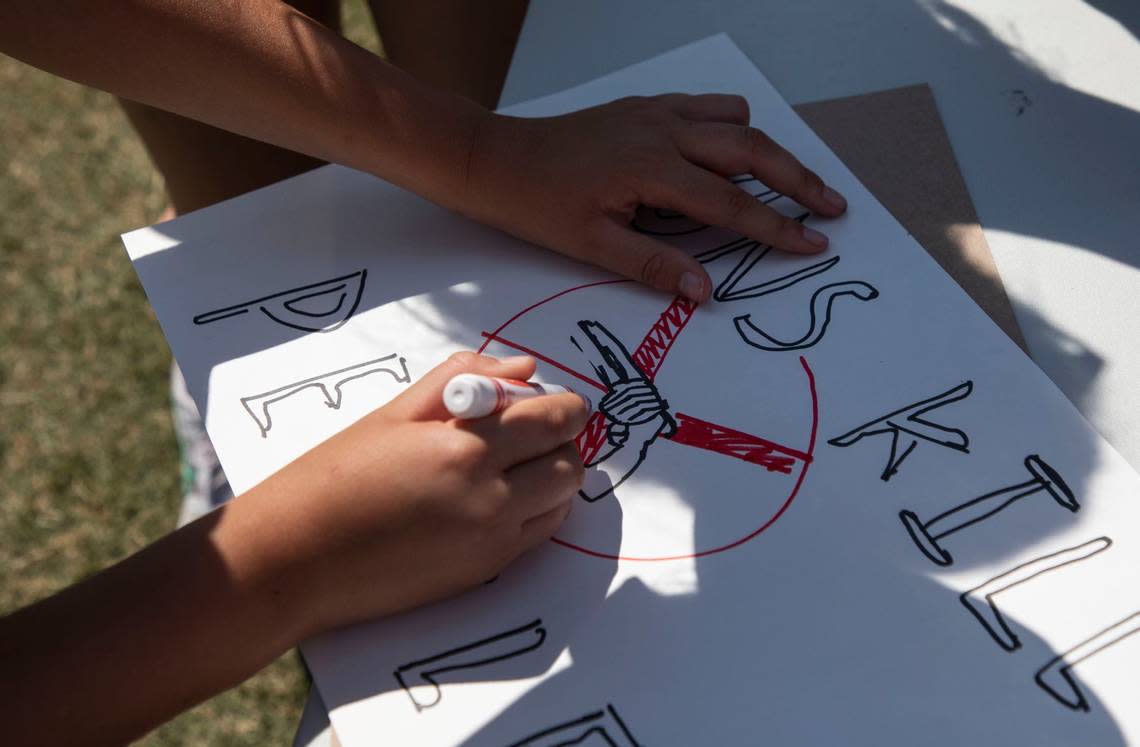The number of kids shot in Charlotte is rising, and the effects are long-lasting

EDITOR’S NOTE: This reporting is part of ongoing Charlotte Observer coverage about gun violence, its impact on families and communities and relevant public policy.
Kids and guns. Guns and kids.
It’s a combination of words put together more and more often, but it still never seems to soften what it really means. Like the story The Charlotte Observer published recently about a 16-year-old arrested for shooting and killing another 16-year-old (and a 21-year-old) on The Plaza. Or when six people — including three children — were shot and killed in Nashville earlier this week.
And statistics show that combination of kids and guns is having rising deadly and life-altering consequences.
From 2012 to 2021, the rate of North Carolina youth killed by firearms rose from 1.6 to 5.3 per 100,000 minor-aged residents, according to data from the N.C. Department of Health and Human Services. The rate for those ages 15, 16, and 17 rose from 8.6 in 2019 to 21.5 in 2021.
From 2019 to 2021 the number of minors killed by guns more than doubled to 121. The deaths in 2021 include about 30 suicides and 12 accidental killings. Shootings stole the most lives.
Gun violence is taking the lives of a growing number of kids. And then there’s the ones who are shot and survive. What happens to the ones who sustain “non-life threatening injuries,” as police reports often state? Kids like 13-year-old Aalayah Fulmore, who nearly died after a bullet tore into her abdomen when she was sitting in her Concord bedroom last July. Or 18-year-old Chrishaun Hough, who was paralyzed three years ago when he was shot while sitting in a car that was ambushed in Wadesboro.
Neither of the assailants has been caught, and both Aalayah and Chrishaun are living with injuries that will affect them for the rest of their lives.
Last summer, in its news conference regarding midyear crime statistics in the area, Charlotte-Mecklenburg Police specifically pointed to gun violence among the city’s youth as a headline and implored parents and caregivers to be more accountable for their children — and to properly secure any guns they own.
In the first half of 2022, according to CMPD, 482 children under age 18 were the victims of gun violence, and 118 juveniles became suspects in gun-related crimes.
“We need active parents,” Maj. Brian Foley said during the news conference. “CMPD needs the support, the participation and the partnership of active parents, to negate this youth violence.”
Atrium Health, meanwhile, launched a hospital-based violence intervention program last year in response to internal data that showed a steady rise in patients admitted with gunshot wounds in recent years. According to Atrium, the system treated 703 people with injuries from gun violence in 2021 (up from 457 in 2017); of those, 9% were between age 15 and 19 and 5% were younger than 15. By contrast, in 2017, 7% of patients were 15-19, and only 2% were 14 or younger.
As part of the program, when a violence intervention specialist interviews the patient, “We ask them whether they have insight into what caused them to be a victim of violence,” David Jacobs, director of Atrium’s program, said in a statement recently. “Are they engaging in high-risk behaviors, like buying or selling drugs? Then we set about formulating options ... that will hopefully minimize their chances of becoming a victim of violence again.”
A spokesperson for Novant Health said it is currently working to secure a grant to pursue a hospital-based violence intervention program of its own.
This is not a problem unique to Charlotte. Reporting from the Centers for Disease Control and Prevention shows a sharp rise in gun-related deaths among children during the pandemic — seven per day in 2021; and a jump in gun-related injuries among young people from 9.9 per 100,000 in 2010 to 15.5 per 100,000 in 2020.
Obviously, though, numbers alone don’t fully illustrate the problem. The toll gun-violence incidents take on young people and their families in the days, weeks, months and years that follow can be tremendous.
The Observer is showing you the everyday impact of what these numbers mean.

